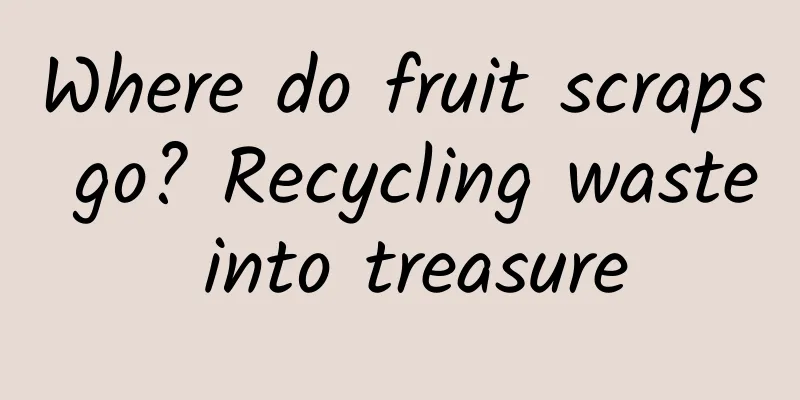Where do fruit scraps go? Recycling waste into treasure

|
In our daily lives, we enjoy the deliciousness and nutrition brought by some tropical fruits, but often ignore their remaining stems, leaves, shells and residues. For example, pineapples, coconuts, bananas, sugar cane, cassava, etc., through scientific processing and innovative applications, they are all valuable resources that can be turned into treasures. Pineapple A natural fiber extracted from the leaves of the pineapple plant, scientifically known as pineapple leaf fiber, has excellent mechanical properties such as high strength, good moisture resistance and biodegradability. Pineapple fiber has unique physical and chemical properties and shows wide application potential in many fields such as textile industry, papermaking industry and biomaterials. banana Banana fiber, mainly derived from the stems and leaves of banana trees, is a natural and sustainable textile material. With the increasing awareness of environmental protection, it is regarded as an ideal green material. The main component of banana fiber is cellulose, which has excellent mechanical properties and biodegradability. In addition to being used in the textile and clothing and household goods industries, it can also be used for industrial materials and composite materials. Banana peels can also be made into feed with high nutritional value through a certain fermentation process. coconut Coconut shell fiber, also known as coconut fiber or coconut bran fiber, is a natural fiber extracted from the fiber layer inside the coconut shell. This fiber has many properties, including high strength, durability, hygroscopicity and antimicrobial properties, biodegradability, and is very environmentally friendly. It has a wide range of applications in many fields. Coconut shells are commonly used in handicrafts and soil for home gardening, which are deeply loved by people. In industry, coconut shells can also be used to make textile products, medical and health products, building materials, and environmentally friendly materials after being crushed, fiber extracted, dried, and processed. sugar cane Sugarcane is delicious, but only the juice squeezed out can be eaten, and it is only a small part of the sugarcane production. Most of the sugarcane is used to produce sugar and other sweeteners. However, a large amount of residues generated during sugarcane processing, including bagasse, sugarcane leaves and sugarcane skins, are often ignored or discarded. In fact, these residues have many potential uses and can be turned into treasures through innovative technologies and methods. Sugarcane is rich in cellulose and hemicellulose, which can be converted into paper, biofuel, bioplastics, etc. through chemical or biological treatment. In addition, bagasse can also produce bioethanol through a fermentation process, or be used in the construction industry as a composite reinforcement material. Cassava Cassava residue is the solid residue left after extracting cassava starch. It contains high cellulose and protein and can be converted into feed for poultry and livestock through a fermentation process. At the same time, cassava residue can also be used as a clean energy source to produce biogas through anaerobic digestion. Research and development of extraction machinery Improve extraction efficiency : Improve the extraction efficiency of useful components such as fiber by improving mechanical equipment. Enhanced product performance : Improve the performance of residue-based products through chemical and physical modifications. Expand application areas : explore the application of residues in new energy, new materials and other fields. Promoting circular economy : Promoting the development of circular economy through comprehensive utilization of agricultural residues. Turning these residues into treasures not only reduces environmental pollution, but also opens up new ways to utilize resources. With the advancement of science and technology, plant fiber extraction machinery and equipment have been successfully developed, but there are still problems with low efficiency and quality. I believe that with the advancement of technology and the increasing demand for sustainable materials, the utilization prospects of these residues are broad. Future research and development will continue to promote the development of this field and achieve more innovations and breakthroughs. |
Recommend
Drink tons of plain water, but it’s not as good as this to quench your thirst?
Audit expert: Wang Guoyi Postdoctoral fellow in N...
What is the difference between donkey-hide gelatin and donkey glue?
I believe that in daily life, many female friends...
I swear! I swear! I swear!
He is taciturn After saving people from the mud F...
Is myopia laser surgery suitable for most people? You may not know these taboos
The college entrance examination season is over, ...
Was there air pollution in ancient times? Let’s see what the ancients said!
Copywriter: Tianlan Editorial Office Edited by: R...
Feeling weak the next day after drinking
If you find that you have no strength in your who...
Is it an unnecessary "duplicate examination" to have an electrocardiogram and an echocardiogram?
People who are most concerned about annual physic...
The efficacy and function of the big golden knife
Diseases require improvement through medicine. Di...
Effects of boiled mugwort water
Everyone must have seen mugwort in their daily li...
Chinese herbal medicine horseradish
Traditional Chinese medicine, the essence accumul...
Orange rainstorm warning: 9 provinces and cities will have heavy rain to torrential rain, please take precautions! !
The Central Meteorological Observatory continued ...
Can Panax notoginseng powder remove freckles?
Freckles in some patients are caused by blood blo...
What are the effects and functions of Buddleja
Buddleja buddleja, also known as small brocade fl...
The efficacy and function of thick stem Luogudi
As a traditional Chinese medicine, do you know th...
The efficacy and function of yellow corydalis
There are many types of Chinese medicine. When we...









